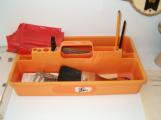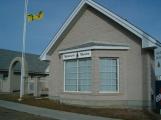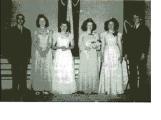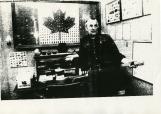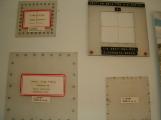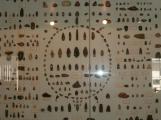15
Mr. Liboiron showed promise at an early age. Let's listen to Mr. Guy Roberge, as he reminisces about a young Henri.16
O.K. Well Mr. Liboiron's childhood, first of all to understand who Mr. Liboiron is, he's my uncle, he's my mom's brother, younger brother. And he was born in 1929. That tells you that he grew up in the 30's, which meant lots of soil erosion, wind, drought. So, arrowheads were being exposed over top of the land, everywhere. And at that time, when Uncle would find these things, it's pretty evident when you find an arrowhead that it's something that another human has touched. Even a child knows that. And he would pick them up, and so would my Mom, the whole family actually. And there was a traveller at that time, by the name of Mr. Chapman. He was a traveller, and he would stop at my grandfather's place, and my uncle and my mom and the kids would have these arrow heads and tobacco cans and stuff. This Mr. Chapman knew that there was value to this collection, so he would buy them. And that was his way, instead of picking coke bottles or beer bottles like the kids today or like we used to, he would pick arrowheads. But after doing this for a couple of years, he found out, if someone is buying these, there must be value to them. So towards the end of the 30s, he said, "I'm not going to sell these things anymore. I'm going to start keeping them." So he started keeping them and cataloguing where he found them and stuff. And so was my mom. He wasn't alone in that. Mom was very interested in doing that, as was the rest of the family. And that's basically how it started. He started collecting them, collecting them, he'd read about them. He was a reader. He read everything. And he read every day and all the time because he had got hurt when he was a young boy, his head. He had a brain tumor, so physically he had to be careful. He was a student that just enjoyed books. Some don't, but he did. Academically, he was very good. And he read and he read. And he started reading about these arrowheads. And reading about the Native culture. And found out that there's more to the culture than just arrowheads. There's spears, there's ceremonial, there's scrapers, so it's like everything else. The more you dig into something, the more interesting it gets. So much so that he became pretty educated about it, and over the years, with a group of others, they decided to form an archaeological society, which was something that didn't exist in Saskatchewan at that time. So he's one of the founding members of the Archaeological Society of Saskatchewan. He always stayed at the amateur level, he didn't go professional. He didn't have to. He was a farmer, and pretty much self sufficient and independent, and he didn't need to work for anyone, so he didn't. He retired at the age of 50, which was pretty young. When he did retire, he devoted 100% of his time to archaeology and his science. And at that time, when he was retired, he started doing all kinds of experiments. So, over the years, like I said, he became so interested that it became a science. It was more than just fun. The more you dig into something, the more you know, and the more you know, the more you want to know and it's an ongoing thing, almost like an addiction. And of course, the rest of the family is brought in. Like my mom. She never got into it up to that level19
After graduation, Henri stayed on the farm and continued to collect artifacts. Here we see him in his basement museum.21
It seems Henri had been seen as a part of the landscape for a long time.22
What impressed me about Henri when I was a young lad is that whenever I went outside I could see this man walk around our fields almost every time there was a wind storm. And then I would ask my dad," What is that man doing?" and he would say," He's looking for arrowheads."
25
These are some of Henri's tools that he used to excavate arrowheads and fossils.1972
Ponteix, Saskatchewan
